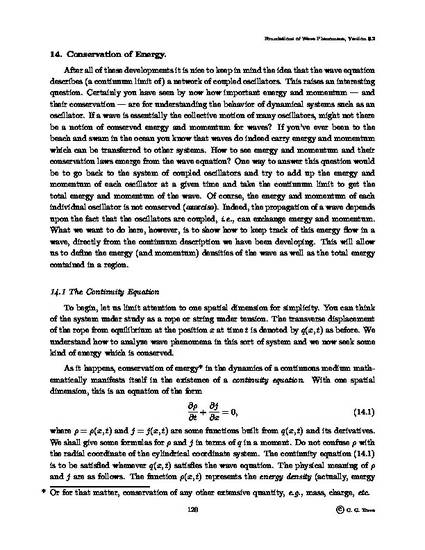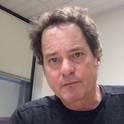
After all of these developments it is nice to keep in mind the idea that the wave equation describes (a continuum limit of) a network of coupled oscillators. This raises an interesting question. Certainly you have seen by now how important energy and momentum — and their conservation — are for understanding the behavior of dynamical systems such as an oscillator. If a wave is essentially the collective motion of many oscillators, might not there be a notion of conserved energy and momentum for waves? If you’ve ever been to the beach and swam in the ocean you know that waves do indeed carry energy and momentum which can be transferred to other systems. How to see energy and momentum and their conservation laws emerge from the wave equation? One way to answer this question would be to go back to the system of coupled oscillators and try to add up the energy and momentum of each oscillator at a given time and take the continuum limit to get the total energy and momentum of the wave. Of course, the energy and momentum of each individual oscillator is not conserved (exercise). Indeed, the propagation of a wave depends upon the fact that the oscillators are coupled, i.e., can exchange energy and momentum. What we want to do here, however, is to show how to keep track of this energy flow in a wave, directly from the continuum description we have been developing. This will allow us to define the energy (and momentum) densities of the wave as well as the total energy contained in a region.
- wave equation,
- energy,
- conservation,
- chapter 14
Available at: http://works.bepress.com/charles_torre/74/

Version 8.2
Chapter 14